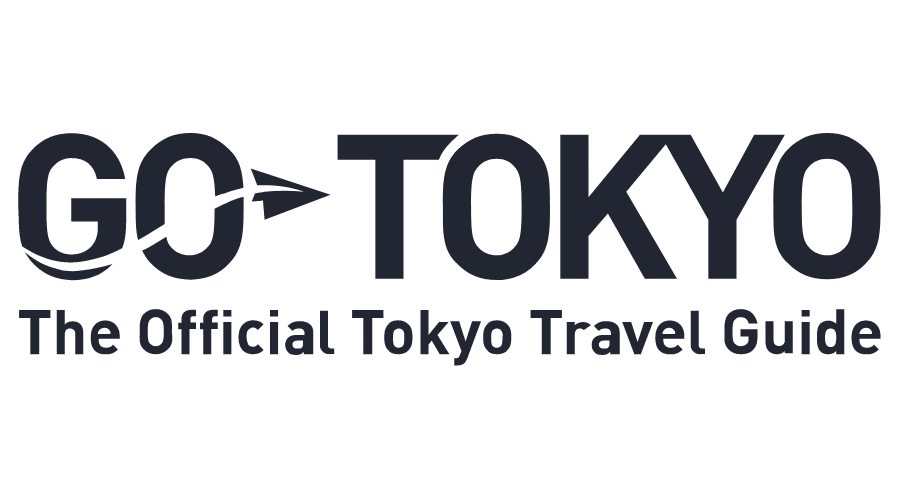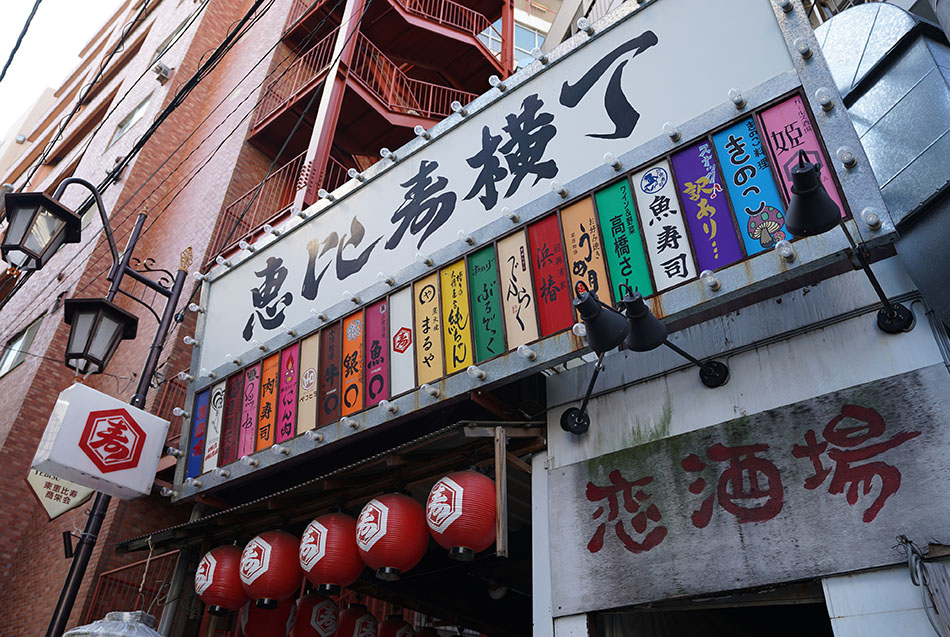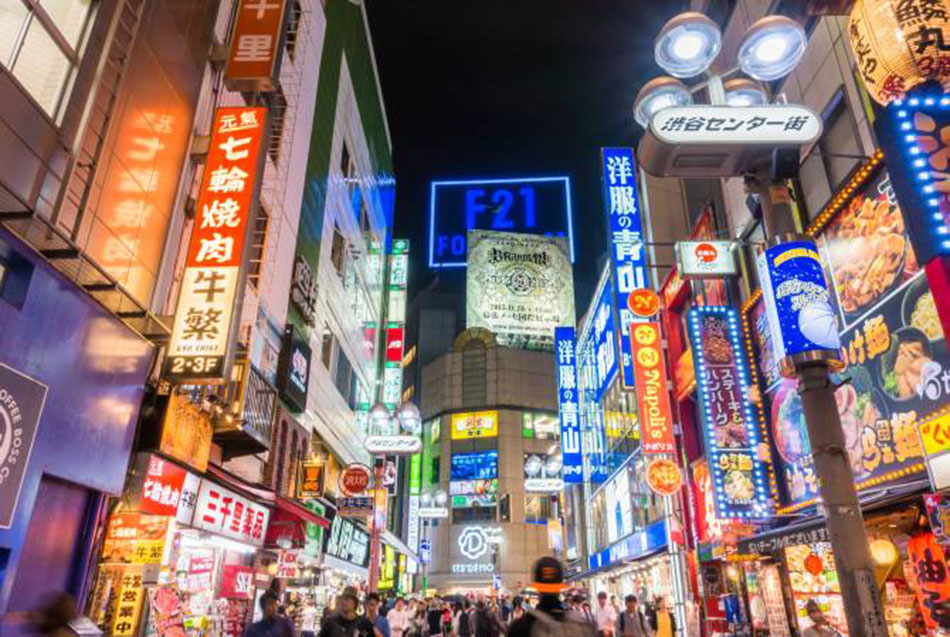About us

The city has been the vibrant heart of Japan for over 400 years, and is a crossroads where tradition meets modernity. We work tirelessly to promote Tokyo to attract domestic and international tourists, as well as to support travel professionals and media representatives.
Company Name : Tokyo Convention & Visitors Bureau
News & announcements
-
29 Nov 22
NEWS
Tokyo Tourism hosting agent marketplace in LondonTokyo Tourism is hosting a travel trade promotion in London. The first B2B Tokyo event ...Read moreTokyo Tourism hosting agent marketplace in London - News & announcementsTokyo Tourism is hosting a travel trade promotion in London. The first B2B Tokyo event since 2019 takes place on Wednesday 1 February 2023. It invites travel agents, tour operators, and media to engage with hotels, airlines and experience providers. New Tokyo openings for 2023 include hotels by Aman Resorts, Bulgari and IHG New Tokyo tourism attractions include a Harry Potter Studio and Jurassic World exhibition. The free event includes buyer and seller meetings, networking, and a Discover Tokyo 2023 reception. Attendees have the chance to win a trip to Tokyo. The Tokyo City Promotion 2023 includes an introduction to the best nature attractions in the Tama area and the islands of Tokyo, Pre-registration is required by 16 January 2023. Flight capacity to Japan is set to return to pre-Covid levels when Japan Airlines resumes its double daily service. ANA restarted daily London to Tokyo flights on 30 October. British Airways resumed daily Tokyo flights on 14 November. -
22 Sep 22
NEWS
Japan to allow visa-free, independent touristsJapan will finally lift more of its Coviid border curbs next month. From October11, it ...Read moreJapan to allow visa-free, independent tourists - News & announcementsJapan will finally lift more of its Coviid border curbs next month. From October11, it will allow, individual trips visa-free. Prime Minister Fumio Kishida announced the changes at UN General Assembly in New York. On the same date, Japan will eliminate the daily arrivals cap, which is currently at 50,000. “We will remove the cap on the number of people entering the country, and will resume accepting individual travel and visa-free travel,” Kishida said. Japan currently only allows tourists on authorised group tours and all require visas. Prior to the pandemic, Japan allowed visa-free travel for nationals of 68 countries and territories. It over 30 million visitors annually before Coviid struck. -
21 Sep 22
Partner News
Get more out of the city with The Tokyo PassJust as foreign tourism to Japan begins to open up and visits become easier, ...Read moreGet more out of the city with The Tokyo Pass - News & announcementsJust as foreign tourism to Japan begins to open up and visits become easier, Tokyo has created and launched The Tokyo Pass to enhance and improve the visitor experience for everyone coming to the city. The Tokyo Pass offers visitors an affordable smartphone app bundling handy tourist hints & tips, useful information about the city, top sightseeing spots and entry into more than 35 of Tokyo's most popular visitor attractions.
The Tokyo Pass offers visitors an affordable smartphone app bundling handy tourist hints & tips, useful information about the city, top sightseeing spots and entry into more than 35 of Tokyo's most popular visitor attractions.
 Visitors can also combine The Tokyo Pass with a Tokyo Subway Ticket, offering unlimited journeys on Tokyo's vast underground transport network for 2, 3 or 5 days.
Visitors can also combine The Tokyo Pass with a Tokyo Subway Ticket, offering unlimited journeys on Tokyo's vast underground transport network for 2, 3 or 5 days.
 The Tokyo Pass also provides details of cultural events and various area guides to this huge metropolis, allowing visitors to explore everything Tokyo has to offer and meet locals along the way.
The Tokyo Pass also provides details of cultural events and various area guides to this huge metropolis, allowing visitors to explore everything Tokyo has to offer and meet locals along the way. -
28 Jun 22
NEWS
Tokyo-Saipan flights to restartThe long grounded air link between Tokyo and Saipan will restart on September 1, 2022 ...Read moreTokyo-Saipan flights to restart - News & announcementsThe long grounded air link between Tokyo and Saipan will restart on September 1, 2022 Direct flights have been halted since before the Covid pandemic. United Airlines will fly three times weekly flights from Tokyo-Narita International Airport on Tuesdays, Thursdays, and Sundays.. The flights are supported by the Office of the Governor, Marianas Visitors Authority’s Tourism Resumption Investment Plan. Saipan is part of the Northern Mariana Islands, a US pacific territory. Japan is a major source market for tourism -
22 Feb 22
Expert Hub
Tokyo at Night: From Beautiful Night Views to Phenomenal NightlifeIn order to prevent the spread of coronavirus (COVID-19), various facilities around Tokyo may change ...Read moreTokyo at Night: From Beautiful Night Views to Phenomenal Nightlife - News & announcementsIn order to prevent the spread of coronavirus (COVID-19), various facilities around Tokyo may change their operating days or hours. In addition, some events may be canceled or postponed. Please check official facility or event websites for the latest updates and information. As you might expect from one of the world’s biggest and most bustling cities, Tokyo is phenomenally vibrant at night. We’ll cover the best night views, popular nightlife districts like Shinjuku and Roppongi, places to drink, places to see live music, and much more. Let’s explore Tokyo at night.Tokyo nightlife: great drinks & amazing parties
Bars, pubs, casual izakaya to Michelin-starred cuisine, nightclubs for every taste (from tiny to giant, from house and techno to hip-hop), live music of every genre (jazz, rock, blues, punk), and special events every night of the year. There’s always a great party going on in Tokyo.
Popular nightlife districts
So, what areas of Tokyo have the best nightlife? It depends on what you want, of course, and most neighborhoods of the city have great places to eat and drink until late, but the city’s most bustling night districts tend to be the city’s most bustling areas in general, like Shibuya, Shinjuku, Roppongi, Ikebukuro, and Ginza/Yurakucho. These districts also have plenty of areas nearby that are nightlife hubs in their own right: Koenji, which is known for DIY punk music venues, near Shinjuku; Shimokitazawa, with its trendy bars and lounges, near Shibuya; Nakameguro, which has some exceptional food options, near Shibuya and Roppongi. If you want to pick an area where the nightlife is more geared towards foreign visitors, try Roppongi and the surrounding neighborhoods (Ebisu, Meguro, Hiroo, Azabu Juban), Shibuya and Shinjuku, or the area around Tokyo Station. The areas around big tourist attractions like TOKYO SKYTREE also naturally tend to be tourist friendly, although they might not necessarily have a bunch of places open late.



Bars, pubs and izakaya
Tokyo is an awesome city to go out drinking. Make sure you spend at least part of one evening at an izakaya. The izakaya is a Japanese restaurant. It’s a place where you can enjoy a drink and small bites of food from a range of Japanese culinary styles. Izakaya are everywhere in Japan, and the standard quality of the food tends to be high, even at casual, hole-in-the-wall places. There are also plenty of straight-up bars, and some incredible beer bars like Popeye in Ryogoku. There are also plenty of jazz bars with great live music. Shinbashi and Ginza are quieter on the weekends, but during the week they attract a lively afterwork crowd that flows into the hundreds of buildings stacked tall with izakaya. For the late-night weekend scene, Shinjuku, Shibuya and Roppongi are good bets. Popeye
Courtesy of Shuhei Haruta
Popeye
Courtesy of Shuhei Haruta
 Popeye's beer taps
Courtesy of Shuhei Haruta
Popeye's beer taps
Courtesy of Shuhei Haruta
Clubs in Tokyo
Going to a club for music can mean different things to different people…but whatever your taste, Tokyo has you covered. Tokyo has more jazz clubs than anywhere else in Japan. Famous jazz clubs include the Pit Inn in Shinjuku and the Cotton Club in Marunouchi, and record bars, like City Country City in Shimokitazawa, are also popular. Harlem in Shibuya is probably Japan’s most prominent hip-hop club. And if you’re interested in a dance club that leans more towards house and techno, you could head to Oath, located in the former Trump Room, which stays open until 8am on weekends. Meanwhile, the largest club event AgeHa in Shin-Kiba is usually playing a variety of genres on any given night. These are just a small sampling of the nightclubs and live music clubs that Tokyo has to offer. Pit Inn
Pit Inn
 Cotton Club
Cotton Club
 City Country City
City Country City
 Harlem
Harlem
 Oath
Oath
 AgeHa
AgeHa
Seek out some great yokocho (night markets, Tokyo-style)
Tokyo doesn’t have too many night markets of the kind you might find in other big Asian cities, although Ameya Yokocho (aka Ameyoko) in Ueno is a great shopping street that does stay open into the early evening. What Tokyo does have, though, is a wide range of yokocho (alleys) filled with casual yatai (stalls) selling all sorts of great food and drinks. Many are located under or beside the train tracks, and their charming retro atmosphere is intoxicating. A few great options are Golden Gai and Omoide Yokocho in Shinjuku, Nonbei Yokocho (Drunkard’s Alley) in Shibuya, Ebisu Yokocho in Ebisu, and Suzunari Yokocho in Shimokitazawa.



Tokyo night views: best places to see the Tokyo skyline and night lights
Tokyo at night is a vast sea of lights, with plenty of iconic night views and skylines that serve as the wallpapers of countless computers.Best views of the Tokyo skyline at night
If you want to catch a sweeping view of the Tokyo night skyline, one good option is to go up! In highrise-heavy districts like Shinjuku and Shibuya, there are plenty of bars and restaurants situated near the tops of buildings where you can gaze out on the urban expanse. There are also dedicated observation decks, such as SHIBUYA SKY, or the observatory at the Tokyo Metropolitan Government No. 1 building. And you might already know about New York Bar on the 52nd floor of Park Hyatt Tokyo, which was made globally famous by the movie Lost in Translation. Courtesy of New York Bar, Park Hyatt Tokyo
Courtesy of New York Bar, Park Hyatt Tokyo
 Alternatively, you could hop on a nighttime cruise in Tokyo Bay or around the rivers of Tokyo, taking in Rainbow Bridge and Odaiba.
Alternatively, you could hop on a nighttime cruise in Tokyo Bay or around the rivers of Tokyo, taking in Rainbow Bridge and Odaiba.

Check out the neon lights
A crowded street filled with bright neon signs and lights—it’s a quintessential Tokyo scene. Maybe you even have one of these images as your computer wallpaper or phone background right now. How can you see it for yourself? You could head to Center-gai (aka Basketball Street) in Shibuya, across the famous Shibuya Scramble from Shibuya Station’s main building. Or stroll through Kabukicho in Shinjuku. Or walk down the main avenues of Akihabara or Ginza. Or head to a yokocho (like Golden Gai or Nonbei Yokocho). The list is practically endless!
Winter holiday lights across the city
During the holiday season, Tokyo takes its lights displays/illuminations very seriously. Two beautiful lights displays put on each year are the Roppongi Hills Keyakizaka Illumination and the Caretta Shiodome Winter Illumination. And don’t miss the long boulevard of trees lit up in white lights in the Marunouchi area.
Great spots for night photography in Tokyo
If you’re keen to get some great shots of Tokyo at night, we’ve already covered some highlights (neon streetscapes, sweeping skylines), but also consider a temple or shrine: Kanda Myojin Shrine and Hanazono Jinja Shrine are good options. Many shrines and temples keep their grounds open at night and light up their temple buildings in beautiful ways. If you want a shot with the iconic Tokyo Tower, you could head to Zojoji Temple.
Keep exploring Tokyo after dark: from night walks to night drives
Tokyo is safe at night, and one advantage of Tokyo being such a safe city is that you can explore the night streets without too much worry. But where to go exactly?Night walks
One nice idea is to stroll along the banks of Tokyo’s rivers. An example would be the Meguro River near Naka-Meguro. Its banks are lined with cherry trees, and so it is particularly beautiful during cherry blossom season—but fair warning, it’s also more crowded then. Two other great ideas: Asakusa to TOKYO SKYTREE, or Odaiba across the Rainbow Bridge to Tokyo Tower.
Night drives
If you have a car, then consider a leisurely night drive. One adventure that’s popular among locals is to drive from central Tokyo to the neighboring city of Yokohama. You’ll get some spectacular views of Yokohama Bay. If you’re cruising in the center of Tokyo, drive the Uchibori-dori, which passes by the Imperial Palace. If you don’t have a car, another option is to board the JR Yamanote Line, which loops around central Tokyo, peering out the window as the skyscrapers swoop by.Tokyo night tours
If you want to explore Tokyo by night, but you’re looking for a more guided experience, not to worry. There’s a tour for practically everything. Tour buses with open roofs do night tours, and tour boats ply Tokyo Bay each evening. If you want to go on foot, you can also join up with a guided pub crawl. Other tours offer a mix of what we’ve talked about in the previous sections, making for a comprehensive look at downtown Tokyo at night: good food & drinks, neon lights, shrines and temples after dark, and bustling streets and yokocho. -
19 Sep 21
NEWS
Tokyo Marathon postponed until 2022The continuing state of emergency has led to another postponement of the Tokyo Marathon. It ...Read moreTokyo Marathon postponed until 2022 - News & announcementsThe continuing state of emergency has led to another postponement of the Tokyo Marathon. It has been pushed back from October to March 2022. It had already but delayed once from March 2021. The current state of emergency is due to expire at the end of September. Non-elite runners who had registered for the 2021 race will get priority to run in the 2022 event. To try and ensure the event went ahead, organisers had already compromised by reducing the number of runners from 38,000 to 25,000 and banning non-elite runners from overseas. Read full story -
10 Aug 21
NEWS
After the Tokyo Games: InsideJapan’s top Tokyo tips for first timersby James Mundy The Olympics have come to a close and the world's media is ...Read moreAfter the Tokyo Games: InsideJapan’s top Tokyo tips for first timers - News & announcementsby James Mundy The Olympics have come to a close and the world's media is heading home. It was not only fans that didn't get to see Tokyo this summer due to Covid restrictions, but the athletes too. Fortunately, Tokyo is still be there as the Olympics buzz dies down - but when you're on holiday in one of the world's biggest cities, how are you supposed to know where to start? To help you get your bearings, Japan travel specialists InsideJapan are sharing some of their top Tokyo tips for first timer visitors. Head to the top A stay in a traditional ryokan guest house is always recommended in Japan - except for when you're in Tokyo, that is. This city is best sampled from a high-rise hotel with a view. If you can't find anywhere lofty to stay for the night, however, there are plenty of other opportunities to take in views of the sprawling metropolis. Tokyo's 634 metre-high Skytree serves up city views as far as the eye can see - and you might even see Mount Fuji on a clear day from its 450 metre-high viewing deck (at a cost of 3,100 yen/approximately £22). Not only that, but there are some incredible free views too - one of the best being the view from the Tokyo Metropolitan Government Building, standing at 242 metres tall. Its 202 metre-high observation decks offer views that stretch from the city to the mountains. Searching high… High-rise, neon Shinjuku is arguably the beating heart of Tokyo. As the city's transport hub, it is also a hive of activity - with food, bars, karaoke boxes, gaming centres and much more. Head to the upmarket Takashimaya department store's food basement for a massive array of beautifully presented food. On the south side, Tokyu Hands is where you'll find floors of gadgets and stationery - and Don Quixote on the east side sells an interesting array of the quirky and useful. ...and low For those who want a taste of traditional Tokyo, head to the old Yanesen district. This is old-fashioned low-rise Tokyo with family run shops making and selling senbei rice biscuits, green tea and coffee shops, textile shops and old craft stores too. There are various small temples dotted around the area and many a cat can be seen. This is a traditional Tokyo and a breather from the crowds. Temple run The old Asakusa district is home to the famous Sensoji temple. The entrance to the temple complex is marked by the imposing Kaminarimon 'Thunder Gate' with a long line of stores along the Nakamise-dori selling everything from rice biscuits, geta sandals, kimono and more but it is the temple that's impressive. If you head there in the early evening, you can avoid the crowds and see the temple buildings lit up. Garden city Hamarikyu garden is a 17th century garden that sits serenely with the Sumida River on one side and the skyscrapers of Shiodome on the other. Stroll the gardens or sip a green tea in the tea house for a moment of calm. There are plenty of other gardens too with Rikugien being a quiet strolling garden being a favourite, especially during autumn leaf season (Mid Nov-early Dec). Scrambling for words
Shibuya 'scramble' is the Bladerunner-esque crossing where hundreds of people cross at one time, surrounded by huge video screens. Head there at dusk as the lights come on for maximum impact. Or, for another view, head to Shibuya Scramble Square for a 360 view of Shibuya in its glory from a roofless 260m high viewing platform. There are big crossings all over Tokyo, but Shibuya is the most impressive. Top tip: Never cross on the red man. Always wait for the green man or you will get very disapproving looks or even arrested.
Art & Culture
There's always a good exhibition in Tokyo. The Yayoi Kusama Museum displays the artist's familiar polka dot contemporary style in Waseda and for the classic art lovers, the woodblock print work at the contemporary looking Sumida Hokusai Museum is impressive. The teamLab Borderless digital museum blows minds with its interactive digital displays. All perfect rainy-day material.
Don't miss out on…
If you haven't found what you wanted in one of the many vending machines in the city, head to an Izakaya 'traditional pub' for a drink and a bite to eat. This is a proper Japanese experience and where the locals let their guard down. Often selling beer, sake and local spirits along with a range of snack food including sushi, okonomiyaki, gyoza, salad, fries and more, these places sometimes offer a 'tabi-nomihodai' or 'eat and drink as much as you like' from as little as 3000 yen (approx. £21) for a couple of hours. This is Japan at its most sociable.
Training is best
The best way to get around Tokyo and indeed Japan is by train. There is a huge network of overland and subway trains across the city with a whopping 882 train stations in the Metropolis. They are frequent, they run on time to the second, they are clean and indeed part of the experience. An IC card (similar to Oyster card) is the best way to pay, and travel is cheap with journeys costing from 170yen (approx.£1.10).
And for those that have been to Tokyo before and are looking for a fulfilling day trip out of the city, take a look at our blog piece here for easy but very different trips out of Tokyo.
InsideJapan offers Insider knowledge and insight for people to discover some of the lesser-known and most memorable parts of Tokyo and Japan, creating self-guided cultural adventures and a range of off-radar small group tours.
www.InsideJapanTours.com
Scrambling for words
Shibuya 'scramble' is the Bladerunner-esque crossing where hundreds of people cross at one time, surrounded by huge video screens. Head there at dusk as the lights come on for maximum impact. Or, for another view, head to Shibuya Scramble Square for a 360 view of Shibuya in its glory from a roofless 260m high viewing platform. There are big crossings all over Tokyo, but Shibuya is the most impressive. Top tip: Never cross on the red man. Always wait for the green man or you will get very disapproving looks or even arrested.
Art & Culture
There's always a good exhibition in Tokyo. The Yayoi Kusama Museum displays the artist's familiar polka dot contemporary style in Waseda and for the classic art lovers, the woodblock print work at the contemporary looking Sumida Hokusai Museum is impressive. The teamLab Borderless digital museum blows minds with its interactive digital displays. All perfect rainy-day material.
Don't miss out on…
If you haven't found what you wanted in one of the many vending machines in the city, head to an Izakaya 'traditional pub' for a drink and a bite to eat. This is a proper Japanese experience and where the locals let their guard down. Often selling beer, sake and local spirits along with a range of snack food including sushi, okonomiyaki, gyoza, salad, fries and more, these places sometimes offer a 'tabi-nomihodai' or 'eat and drink as much as you like' from as little as 3000 yen (approx. £21) for a couple of hours. This is Japan at its most sociable.
Training is best
The best way to get around Tokyo and indeed Japan is by train. There is a huge network of overland and subway trains across the city with a whopping 882 train stations in the Metropolis. They are frequent, they run on time to the second, they are clean and indeed part of the experience. An IC card (similar to Oyster card) is the best way to pay, and travel is cheap with journeys costing from 170yen (approx.£1.10).
And for those that have been to Tokyo before and are looking for a fulfilling day trip out of the city, take a look at our blog piece here for easy but very different trips out of Tokyo.
InsideJapan offers Insider knowledge and insight for people to discover some of the lesser-known and most memorable parts of Tokyo and Japan, creating self-guided cultural adventures and a range of off-radar small group tours.
www.InsideJapanTours.com
-
26 Jul 21
NEWS
Missing out on the Japan experience during the Tokyo OlympicsSpecialist tour operator InsideJapan look beyond the Games to travelling again by James Mundy ...Read moreMissing out on the Japan experience during the Tokyo Olympics - News & announcementsSpecialist tour operator InsideJapan look beyond the Games to travelling again by James Mundy The only thing that has been certain throughout the pandemic is that nothing is certain. However, the Tokyo Olympic Games kicked off, albeit without domestic or international spectators. One thing certain is that it is a great loss for the brand and the fans of the Games who don't get to experience the magic of Tokyo and Japan. With another State of Emergency declared in Tokyo aiming to slow the spread of the Delta variant, the Games is not popular in Japan. After being the first ever Games to be postponed back at the beginning of the pandemic, it is now the first to be held without fans too. From when you leave that plane in Tokyo, things are different. The sounds are different - there's a jingle for everything - everyone is immaculately presented in a uniform, the signs look different, the vending machine snacks are unrecognisable, the trains are organised and on time, everything is clean. It is all just very noticeably different, and eyes widen with excitement despite the jetlag and all before you leave the airport. Go back to 2002 and FIFA's holding the World Cup in Japan and then more recently with a dedicated Rugby World Cup in 2019, speak to anyone that was there and they will tell you how good it was, not because of the event, but because of Japan. They will regale stories about their experiences of staying in a traditional ryokan guest house, getting naked with other bathers in an 'onsen' hot spring bath, a funny night out at an Izakaya 'traditional pub' (followed by karaoke of course), the fact it wasn't as expensive as they thought, the amazing trains and the amazing toilets - never cease to amaze people. They will talk about the fact that they went to Kyoto and saw temples, or Kanazawa and its beautiful gardens, or when they headed into the mountains to a hot spring town and the fact that there was a lot more countryside and less neon cities than they thought there would be. Every visitor will also mention the people and the welcome that they got from Japan that made the visit and the event so special and memorable. These and other experiences of a first-time visitor to Japan will be missing from this Games. The governing bodies that insisted that this Games goes ahead despite the extraordinary circumstances will have denied thousands of athletics fans the opportunity to experience this uniquely different country and culture. It was supposed to be an event that the country would be proud of. Thankfully, Japan is very much a First World nation and will perhaps not suffer as much as other poorer nations might have done through being forced to hold a people-less Games. Another unfortunate certainty is that the pride of Japan will have been damaged through not being able to hold a 'normal' Games. The Olympics was an opportunity to 'relaunch' Japan and the recovered Tohoku region which had suffered after the great Tsunami back in 2011. It would have been the chance to highlight the beauty and richness of rural Japan, sitting north of Tokyo. There is no doubt that Japan would have gone out all (starter) guns blazing for the Games and pulled out all the stops - they may still do, but we won't get to experience it live. If there is another thing certain, it is that Japan always blows expectations out of the water and is always better than the imagination allowed for. There is hope that international TV coverage will show Tokyo and Japan in a favourable light and that it will still get pulses racing for millions of people, thousands of miles away across the globe. There is still hope that it will ignite a flame for the desire to know more about this 'otherworld' and culture which can't quite be grasped through a TV screen and that coverage will capture imaginations and leave people wanting to know more. It is a great shame though for the Olympics that through the governing body's insistence that the show must go on, that they have damaged their brand and a massive opportunity to allow fans to experience their event in a place like no other. They have denied people the chance to experience Japan. Japan specialist tour operator, InsideJapan began running small group tours during the FIFA World Cup and had its most successful year-to-date helping thousands of people over to Japan for the Rugby World Cup back in 2019. However, having not sent anyone travelling since March 2020, they cannot wait to help people discover the country and 'get beneath the surface' of the culture again.
Taking people to lesser-known areas of Tokyo or the sights of Kyoto are what InsideJapan does well. But it is the jumping on a local train, bus or cable-car or even donning walking shoes to take in ancient walking trails across the mountains of central Japan, staying in local guest houses in unassuming villages, calling at local shrines, refuelling on local speciality food and omotenashi Japanese hospitality. It is the off-radar cities, towns and their people that offer those memorable moments. It is what InsideJapan does best. Japan is best seen up close and experienced first-hand. It will be your favourite place. That's how InsideJapan happened.
InsideJapan are the original independent Japan travel specialists.
Japan specialist tour operator, InsideJapan began running small group tours during the FIFA World Cup and had its most successful year-to-date helping thousands of people over to Japan for the Rugby World Cup back in 2019. However, having not sent anyone travelling since March 2020, they cannot wait to help people discover the country and 'get beneath the surface' of the culture again.
Taking people to lesser-known areas of Tokyo or the sights of Kyoto are what InsideJapan does well. But it is the jumping on a local train, bus or cable-car or even donning walking shoes to take in ancient walking trails across the mountains of central Japan, staying in local guest houses in unassuming villages, calling at local shrines, refuelling on local speciality food and omotenashi Japanese hospitality. It is the off-radar cities, towns and their people that offer those memorable moments. It is what InsideJapan does best. Japan is best seen up close and experienced first-hand. It will be your favourite place. That's how InsideJapan happened.
InsideJapan are the original independent Japan travel specialists.
-
08 Jul 21
NEWS
Tokyo Olympics to go ahead without spectatorsEvents at the Tokyo Olympics will go ahead in empty stadiums. The games will go ...Read moreTokyo Olympics to go ahead without spectators - News & announcementsEvents at the Tokyo Olympics will go ahead in empty stadiums. The games will go ahead while Tokyo remains under a state of emergency. That means no spectators iwill be permitted Organisers made the decision just a couple of weeks before the opening ceremony. The government decided to put Tokyo under another state of emergency until 22 August. Some venues are located outside the metropolitan area not under the state of emergency but venues in Chiba, Kanagawa and Saitama prefectures as well will have no fans. Read full story -
21 Jun 21
NEWS
Tokyo Olympics events will have a 10,000 capacity limitDespite constant warnings from health experts Tokyo Olympics organisers said spectators will be allowed in ...Read moreTokyo Olympics events will have a 10,000 capacity limit - News & announcementsDespite constant warnings from health experts Tokyo Olympics organisers said spectators will be allowed in stadiums and arenas. President of the Tokyo 2020 organising committee,Seiko Hashimoto said only domestic spectators are allowed and each venue is capped at 50% of the venue capacity to a maximum of 10,000. A decision on spectators at the Paralympics will be taken in mid-July. Officials said they would make contingency plans to allow events to go ahead without any spectators if the infection rates get worse during the Olympics. Read full story -
20 Jun 21
NEWS
Government adviser calls for spectator-free Tokyo OlympicsA senior Covid government adviser says the Tokyo Olympics should be held without any spectators. ...Read moreGovernment adviser calls for spectator-free Tokyo Olympics - News & announcementsA senior Covid government adviser says the Tokyo Olympics should be held without any spectators. Japan's top infectious disease expert Shigeru Omi, submitted proposals to the government which included no domestic fans in stadiums to reduce the risk of a new outbreak in the country. Foreign spectators have already been banned from attending the Games this summer. Prime Minister Yoshihide Suga wants domestic fans in stadiums and arenas for the Games and Japan's Olympics Minister Tamayo Marukawa has said it would not exceed the 10,000 limit current in force for large scale events. Read full story -
08 Jun 21
NEWS
Foreign media will be tracked by GPS at Tokyo OlympicsOverseas journalists covering the Tokyo Olympics will have their movements tracked by GPS. It is ...Read moreForeign media will be tracked by GPS at Tokyo Olympics - News & announcementsOverseas journalists covering the Tokyo Olympics will have their movements tracked by GPS. It is a move to allay fears of local residents that organisers can safely manage the Games. Overseas media are the only foreigners permitted to the Olympics other than athletes and team officials. Games organisers have banned all foreign spectators. All the reporters must file a full list of places they wish to visit for their work, such as hotels and sports venues. "To make sure that people don't go to places other than the places where they are registered to go, we will use GPS to strictly manage their behaviour," Tokyo 2020 chief Seiko Hashimoto said. Reporters will be asked to stay in designated hotels rather than private homes. Organisers said athletes will also have their movements restricted and must take daily Covid tests.
VIDEOS
【DISCOVERING TOKYO】More than just views—new natural encounters
Escape the Hustle and Bustle of the City and Discover the Breathtaking Nature of Tokyo
To many people, including tourists and even local residents, Tokyo evokes images of futuristic architecture, bright neon lights and swarms of people navigating their way through narrow streets. Tokyo has always been a popular tourist destination that seamlessly blends tradition and modernity, offering something unique for everyone, but a large portion of Tokyo remains relatively unknown to many visitors. Japan is especially unique because of its four distinctive seasons, as the beauty of the landscapes changes from season to season. While these changes can be enjoyed in central Tokyo, they are particularly beautiful once you step out into the suburbs of Tokyo.
Click the link below to learn more!
More than just views—new natural encounters : https://tokyotokyo.jp/article/discoveringtokyo1/
Tokyo Tokyo Official Website : https://www.tokyotokyo.jp/
#TokyoTokyo #OldmeetsNew #Tokyo #Akigawavalley #Showakinenpark #Yakushiikepark #Shikisainomori
To many people, including tourists and even local residents, Tokyo evokes images of futuristic architecture, bright neon lights and swarms of people navigating their way through narrow streets. Tokyo has always been a popular tourist destination that seamlessly blends tradition and modernity, offering something unique for everyone, but a large portion of Tokyo remains relatively unknown to many visitors. Japan is especially unique because of its four distinctive seasons, as the beauty of the landscapes changes from season to season. While these changes can be enjoyed in central Tokyo, they are particularly beautiful once you step out into the suburbs of Tokyo.
Click the link below to learn more!
More than just views—new natural encounters : https://tokyotokyo.jp/article/discoveringtokyo1/
Tokyo Tokyo Official Website : https://www.tokyotokyo.jp/
#TokyoTokyo #OldmeetsNew #Tokyo #Akigawavalley #Showakinenpark #Yakushiikepark #Shikisainomori
-

【DISCOVERING TOKYO】More than just views—new natural encounters
-
![[SWITCH]津田健次郎がアニメーションをキーに紐解く“東京”](https://i.ytimg.com/vi/gHeQzsDE1c0/sddefault.jpg)
[SWITCH]津田健次郎がアニメーションをキーに紐解く“東京”
-

【HELLO! TOKYO FRIENDS】Meet Tokyo as never before【Roblox・AR】
-

【HELLO! TOKYO FRIENDS】Meet Tokyo as never before【Roblox・AR】 - Full version
-

【euronews】A cultural melting pot: What makes Tokyo’s arts scene so special?
-

【euronews】A city of contrasts: Why Tokyo's tranquility and buzz make it so special
-

【Tokyo Tokyo Promotion Video】NOTHING LIKE TOKYO – Tradition(vertical)
-
Contact us
Contact Email/Link :
Sales Department
,
Reservations Department
 United Kingdom
United Kingdom United States
United States Asia Pacific
Asia Pacific




